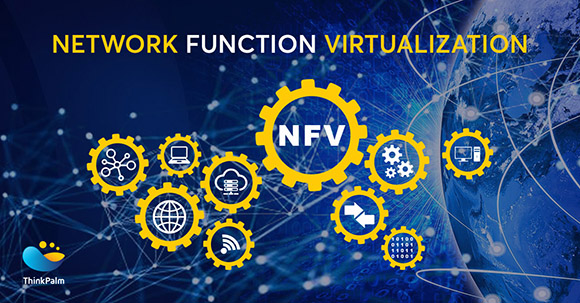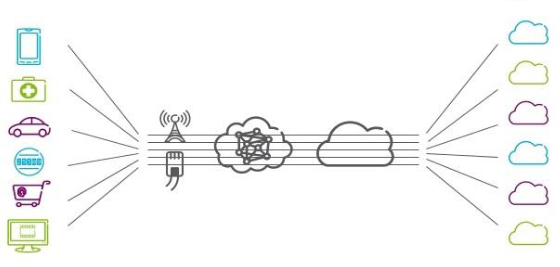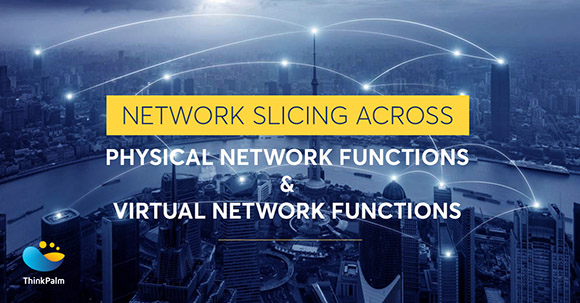
WHAT IS NETWORK FUNCTION VIRTUALIZATION (NFV)
NFV is a simplified approach to networking communication, where network components that earlier used dedicated hardware now run on a software to provide the same functionality. NFV has a wide range of advantages like reduced CapEx/OpEx, virtualization, orchestration, dynamic scaling, automation, multi-tenancy, openness etc.
WHAT IS NETWORK SLICING?
In simple words, Network slicing is having a common physical infrastructure to run multiple logical networks. That is, a logical representation of network for users between a set of network devices and back end applications. For example, IoT devices to connect to the network to reach out to back end M2M applications or via the same network, connect smartphones to VOLTE IMS server. In both the scenarios, to the same network provider infrastructure, the devices are connected. But, either they use a different set of virtual/physical functions or a different path.
The most common real-time scenarios in network slicing include physical network sharing to simultaneously run IoT (Internet of Things), MBB (Mobile Broadband), and very low latency vehicular communication applications. Each scenario has distinct transmission characteristics. The ultimate aim of network slicing is to separate physical network (end to end level) to allow perfect grouping of traffic, isolation between each tenant, and resource configuration at a macro level.

For the provisioning and realization of network slices, several technologies are available. NFV is one of the prominent technologies among them.
WHY WE NEED NETWORK SLICING MANAGEMENT TO BE VIRTUALIZED?
The virtualization and automation of the Network slicing lifecycle management reduce the time for new slice deployment and provides tight loop monitoring and self-adaptation to meet Service Level Agreement (SLA). On the same administrative domain, multiple network slices may be organized jointly by administrative domain management. Some network slices may have particular requirements like end-to-end low latency which need to be taken care of throughout the process including definition, deployment, and operation of the network slice.
If a given set of resources are required by the network slice, such resources should go through CI/CD lifecycle which includes:
- Network slice design
- Impending of the virtual network functions
- Testing and certification
- Instantiation
- Configuration
- Access control
- Monitoring/SLA rules
- Usage/charging rules
- Management/orchestration entity
Once the Network slice is activated, various operations included are:
- Monitoring
- Performance management
- Update
- Upgrade
- Snapshot
- Testing
- Scaling
- Migration
- Termination
Since all such operations are involved, it is very important to virtualize and automate Network slicing life cycle management to allow multiple virtual networks over the same physical network. NFV is a supporting technique for the same.
This Use case focuses on Network slicing across Physical Network Functions (PNF) and Virtual Network Functions (NFV) within a single operator’s domain.

-
ACTORS
An actor stands for a role played by a user or a system that interacts with the network slicing. Different external actors to this use case of Network slicing using NFV includes:
- Customer – Customer is the entity that requests network slice (end to end service) to the service provider.
- Service Provider – Service provider is the entity that delivers the service (end to end) to the customer.
- Network Slice Provider – Network slice will be offered by network slice providers.
- Sub-network Service Provider – Subnetworks which contributes to the network slice will be provided by the entity sub-network service provider.
- End-User – End-user is the entity that uses network slice service which is delivered.
-
PRE-CONDITIONS
Below mentioned pre-conditions apply:
- For an end-to-end service (network slice), there has been a customer request.
- The request has been decomposed by the service provider, and the required network slicing has been identified.
- The blueprint of the network slice has been prepared. The Virtual Network Functions (VNF) and Network Services (NS) to different platforms have been on-boarded.
- Network Services (NS), Virtual Network Functions (VNF), Physical Network Functions (PNF) descriptors in the network slicing instantiation request exist in the catalogs.
- Resources like underlying cloud computing and inter-cloud computing that support the network slice are available from network slice providers.
-
BEGINS WHEN
Network Slicing begins when a new network slice instance has been requested by a service provider to serve the end-user. This request is managed by a system that has:
- A view (end to end) on the potentially dynamic topology.
- Access to various systems (like sub-network service providers systems), that manages the required network slice components to configure with proper policies, access rights, and then to link these components to the new network slice instance.
- Or, requests to perform these tasks, and provide back the related information by other systems.
-
DESCRIPTION
A network slice environment may vary w.r.t various models like single-domain/multi-domain, fully virtualized/hybrid, etc. But generally speaking the following cases may be imagined:
- A Management System which gets a request for network slicing along with network slice blueprint. Such blueprint will explain what is expected from the specific network slice: which elements to be connected end to end, related parameters (latency, bandwidth, energy saving, cost etc), different policies, monitoring, Key Performance Indicators (KPI), Service Level Agreement (SLA), etc.
- The management system will then interpret the blueprint, determines different subsystems, and creates different templates, workflows, details to interface with these subsystems APIs.
- The management system may save the blueprints, details regarding network slice instance, accepts network slice events to report on SLA, end to end testing of the network slice management, and trigger some lifecycle functions like updation/migration/termination of network slice etc.
- Different Subsystems: Subsystems include functions regarding orchestration and management for virtualized environments that provide support for network slice. There are situations where network slices could be established on pure physical resources.
-
END WHEN
The network slice may be terminated and resources may be released, when the service provider requests that this network slice service is not required anymore.
-
POST CONDITIONS
On the termination of the network slice, the logical resources used by that slice are released.
CONCLUSION
The Network slices are made by virtualization of the physical network. NFV architecture with combined management and control can achieve Network slicing lifecycle management to be virtualized which in turns provides a lot of advantages:
- A single network can be utilized to offer different administration based and explicit network slicing based client necessities.
- Administrators can allocate a proper amount of resources according to the network slice. Thus it helps in efficient usage of resources. For instance, one network slice can be designed to deliver low latency and low information rate while the other system cut can be arranged to convey high throughput.
- It helps network operators to reduce capital and operation expenditure (CapEx/OpEx)
- It offers improvement in operational effectiveness and time to market for the conveyance of the 5G network services.
This feature further allows a physical network to be open and programmable for supporting innovation related to network architecture and future services. The network function virtualization (NFV) promises to rewrite the rules of network design, engineering, configuration, and management, visit our communication’s page to learn more about NFV and Network slicing.
Author Bio:

Ashiq: works as a Software Test Engineer at ThinkPalm. He is always passionate about learning new technologies and to give his best attempt to realize the benefit from it. His hobbies include reading and content writing.



